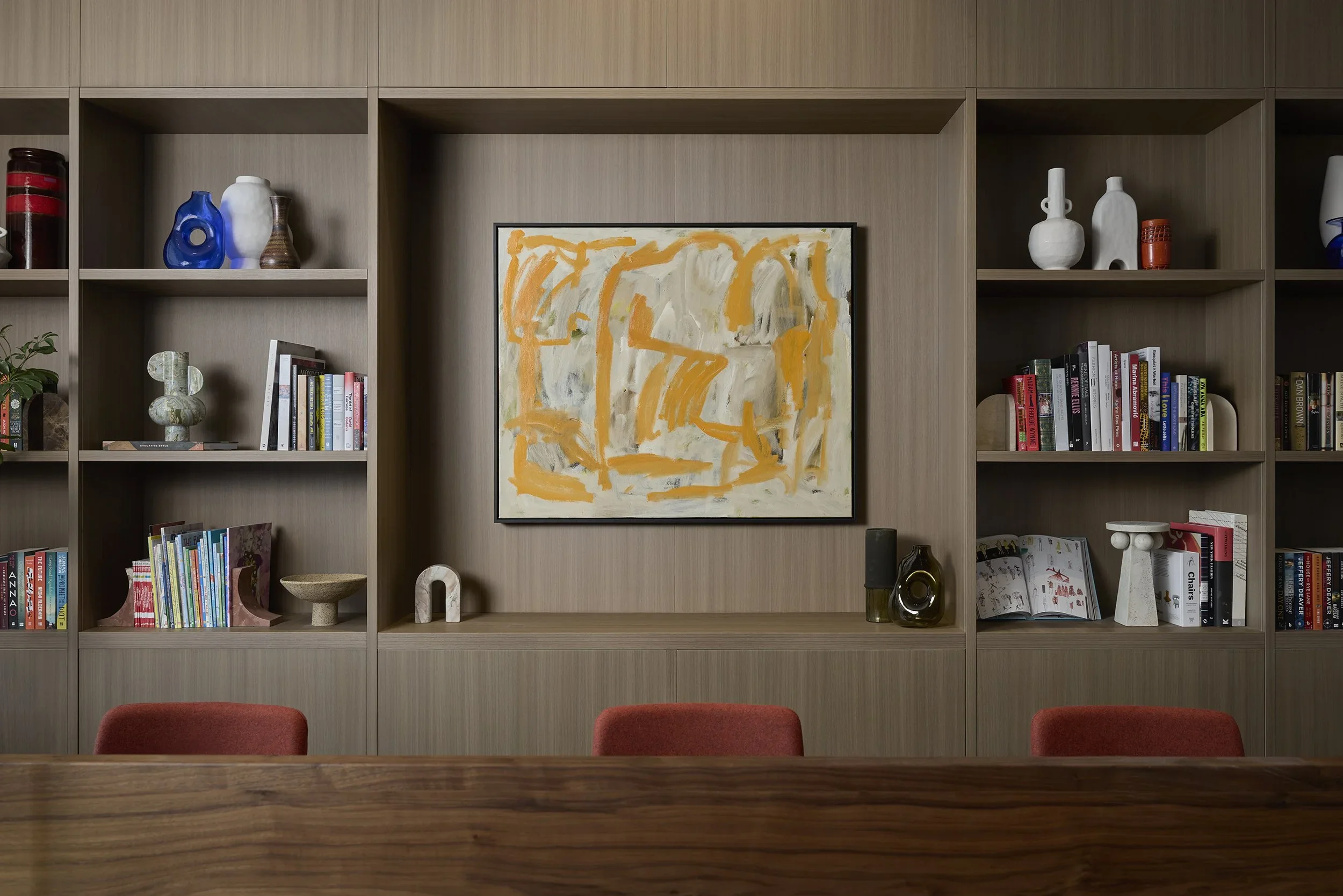Why the number of emerging collectors is growing even as the art market is shrinking.
After two post-pandemic boom years, the global art market cooled again in 2024. Sales fell 12% to an estimated USD 57.5 billion, the second annual decline, as the top end of the market thinned. Yet beneath those headlines, something more hopeful was happening: more people bought art, especially at accessible price points, and a wave of first-time collectors entered the field. While budgets were down, an interest for meaningful stories behind works was increasing.
The data show a market that’s reshaping rather than retreating. While total sales values fell, the number of transactions actually rose by 3%, signalling broader participation. Smaller galleries reported 17% annual sales growth, and auction sales under USD 5,000 increased—evidence that new buyers are entering via lower price tiers rather than chasing established names. Dealers in Australia also reported that 44% of their buyers in 2024 were new to the business, with first-time buyers accounting for 38% of sales.
So who then are these new collectors, and what do they want? The picture is increasingly generational and values-driven. Younger buyers are comfortable transacting online and discovering artists through digital channels. A recent summary of Artsy’s 2024 collector research notes that 82% of millennial/Gen Z collectors bought art online last year, with many finding works via social platforms. That same cohort is drawn to work that resonates personally—pieces that speak to identity, community, and lived experience.
At the high-net-worth level, spending has been rotating toward newer voices: in 2023 and the first half of 2024, HNW collectors allocated a majority—52%—of their art budgets to new and emerging artists. That’s a meaningful shift in where influence (and investment) is heading, and it aligns with what we see day-to-day: collectors want artists who can articulate the “why” behind the work.
In Australia, audience sentiment supports this turn toward meaning. Creative Australia’s national participation survey shows extraordinarily strong public connection to the arts: 97% of Australians engaged with arts and creativity in 2022; 84% acknowledged their positive impact; and 73% agreed First Nations arts are an important part of national culture. Even as household budgets tightened and attendance frequency dipped, the desire for arts experiences—and for culturally grounded storytelling—remained high.
For our work as curators and consultants, this is a welcome alignment to the work we’re already doing. Our approach to developing collections is to seek out works that speak to explorations of place-based stories, cultural memory, or social resonance. They differentiate, deepen resident and visitor connection, and create lasting recall. With more first-time buyers and a tilt toward emerging artists, the opportunity is to commission and acquire from artists who can scale—technically and narratively—into architectural contexts. Additionally, with the rise of local fabricators and greater connectivity with those overseas, and work similar to ours which sees curators and consultancies working as artist agent we’re able to support emerging artists to scale their work in the public domain.
For artists, this moment rewards clarity of voice and proof of delivery. For institutions and commercial clients alike, it’s a change to start new collections, and refresh old ones with works that speak to who we are—locally specific, culturally thoughtful, and future-facing.
Sources:
— Art Basel & UBS Global Art Market Report 2025: 2024 sales down 12% to USD 57.5b; transactions +3%; rise in new buyers; strength at lower price points.
— Art Basel & UBS Survey of Global Collecting 2024: 52% of HNW spend on new/emerging artists.
— Financial Times on the 2024 collector survey: HNW spending shift and generational dynamics.
— Observer summary of Gen Z/Millennial online buying behaviour (from Artsy 2024).
— Creative Australia National Arts Participation Survey (2022 results): high engagement, perceived benefits, and support for First Nations arts.
